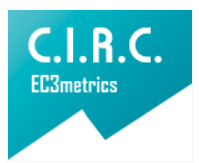Study about suppression of transient evoked otoacoustic emissions, hearing thresholds and recreationa l habits in adolescents
Estudio sobre la supresión contralateral de las otoemisiones acústicas transitorias, umbrales auditivos y hábitos recreativos en adolescentes
Main Article Content
This study is developed under the line of Hearing Conservation implemented in the Centro de Investigación y Transferencia en Acústica from Argentina, where the hearing and psychosocial aspects are studied for 4 years. The aim of this study is analyze, in adolescents between 14 and 15 years old, the relationship of Medial Efferent pathway -by Contralateral Suppression (CS) of Transient Evoked Otoacoustic Emissions (TEOAEs) - with:a) hearing thresholds of the audiometry and b) exposure to high music levels in recreational activities. The results of the first year of
study (Test) showed that hearing thresholds and different levels of exposure to musical activities did not influence the effect of the CS. In the majority of adolescents tested showed a reduction in the response of TEOAEs after contralateral acoustic stimulation, as might be infer that the efferent pathway would be acting as a protective mechanism hearing regardless of their hearing thresholds and levels of exposure. This research has been developed (Retest stage) the study of hearing vulnerability of this group of adolescents to chronic exposure to high music levels.
Downloads
Publication Facts
Reviewer profiles N/A
Author statements
Indexed in
- Academic society
- Bogotá: Corporación Universitaria Iberoamericana
- Publisher
- Bogotá: Corporación Universitaria Iberoamericana
Article Details
Chung, J. H., Des Roches, C. M., Meunier, J. & Eavey, R. D. (2005). Evaluation of Noise-Induced Hearing Loss in Young People Using a Web-Based Survey Technique. Pediatrics, 115 (4), 861-867.
Collet, L., Veuillet, E., Moulin, A., Morlet, T.,Giraud, A. L., Micheyl, C. & Chéry-Croze,S. (1994). Contralateral auditory stimulation and otoacoustic emissions: a review of basic data in humans. Br J Audio., 28,
-8.
Di Rienzo, J. A., Casanoves, F., Balzarini, M. G., Gonzalez, L., Tablada, M. & Robledo,C.W. InfoStat versión 2010. Grupo InfoStat,FCA, Universidad Nacional de Córdoba,Argentina.
Fávero Lopes, M., Sanchez Ganz, T., Bento Ferreira, R. & Nascimento Ferreira, A. (2006). Contralateral suppression of otoacoustic emission in patients with tinnitus. Rev. Bras. Otorrinolaringol., 72 (2), 223-226.
Hamernick R. P., Patterson J., Turrentine G. A. & Ahroon W. A. (1989). The quantitative relation between sensorycell loss and hearing thresholds. Hear. Res., 38, 199-212.
Jofre, P. D., De la Paz, F. P., Platzer, L. M., Anabalón,J. L., Grasset, E. E. & Barnafi, R. N. (2009). Evaluación de la exposición a ruido social en jóvenes chilenos. Rev. Otorrinolaringol.Cir. Cabeza Cuello, 69 (1), 23-28.
Kasper, C. A. (2006). The Simple Guide to Optimum Hearing Health for the MP3 Generation. New York, NY: Craig A. Kasper.
Maison, S. F. & Liberman, M. C. (2000). “Predicting vulnerability to acoustic injury with a noninvasive assay of olivocochlear reflex strength,” J. Neurosci., 20, 4701–4707.
Muñiz, J. F., Ventura Morant, A., Algarra, M. J. (2006). Estudio de la correlación existente entre el efecto supresor contralateral y la Fatiga auditiva mediante Otoemisiones Acústicas Transitorias. Acta Otorrinolaringol Esp., 57, 199-203.
Müller, J., Dietrich, S. & Janssen, T. (2010). Impact of three hours of discotheque music on pure-tone thresholds and distortion product otoacoustic emissions. J. Acoust. Soc. Am.,128, (4), 1853–1869.
Niskar, A. S., Kieszak, S. M., Holmes, A. E; Esteban, E; Rubin, C. & Brody, D. J. (2001). Estimated prevalence of noise-induced hearing threshold shifts among children 6 to 19 years of age: the Third National Health and Nutrition Examination Survey, 1988–1994, United States. Pediatrics, 108, 40–43.
Pontke, S. & Zenner Tübingen, H. P. (2004). Environmental and Occupational Health Disorders: Current aspects of hearing loss
from occupational and leisure noise (233-325) Germany: Schultz-Coulon H. J., editors.Videel OHG.
Rajan, R. (1990). Electrical stimulation of the inferior colliculus at low rates protects the cochlea from auditory desensitization. Brain Res., 506, 192-204.
Rajan, R. (2000). Centrifugal pathways protect hearing sensitivity at the cochlea in noisy environments that exacerbate the damage induced by loud sound. J. Neurosci., 20, 6684 6693.
Rajan, R. (2001). Cochlear outer hair cell efferents and complex-soundinduced hearing loss: protective and opposing effects. J.Neurophysiol., 86, 3073–3076.
Rasmussen, G. L. (1946). The olivary peduncle and other fiber projections of the superior olivary complex. J Comp Neurol., 84, 141-220.
Sadhra, S., Jackson, C. A., Ryder, T. & Brown,M. J. (2002). Noise exposure and hearing loss among student employees working in university entertainment venues. Annual Occupational Hygiene, 46, 455-463.
Sanches S. G. G., Carvallo R. M. (2006). Contralateral suppression of transient evoked otoacoustic emissions in Children with Auditory Processing Disorder. Audiol Neurotol; 11,366-372.
Serra, M. R., Biassoni, E. C., Carignani, J. A.,Minoldo, G., Franco, G., Serra, S., Pollet,Fonoaudiología Iberoamericana Areté Areté Areté Areté Areté Areté 69
A., Joekes, S. & Blanch, N. (1998). Propuesta metodológica para el estudio de los efectos auditivos de la música a altos niveles sonoros en adolescentes. Fonoaudiológica, 44 (3), 52-60.
Serra, M., Biassoni, E., Hinalaf, M., Pavlik, M.,Pérez, J., Curet, C., Minoldo, G., Abraham,S., Moreno, J., Reynoso, R., Barteik, M., Joekes, S. y Yacci, M. (2007). Program for the conservation and promotion of hearing among adolescents. American Journal of Audiology, 16: 158-164.
Serra, M.; Biassoni, C.; Pavlik, M.; Perez Villalobo,J.; Hinalaf, M.; Abraham, M.; Gauchat,S.; Curet, C.; Joekes, S.; Yacci, M. y Riguetti, A. (2009). Audición en los adolescentes: un programa multidisciplinario parasu conservación y promoción. En prensa.
Solanellas Soler J. (2003). Timpanometría. Impedancia auditiva: El impedanciómetro.
En: AEPap ed. Curso de actualización Pediatría 2003. Madrid: Exlibris Ediciones.
Valeiras, M., Dios, C., Porto, I. & Labella, T.(2005). Estudio del sistema olivococlear medial mediante la supresión contralateral de las otoemisiones acústicas. ORL-DIPS,32 (3), 122-129.
Werner, A. F. (2001). Los mecanismos protectores de la cóclea ante el ruido. Rev. Fonoaudiológica, 47 (3), 42-49.
Zenker, F., Altahona, M. P. & Barajas, J. J. (2001). La exposición a ruido por actividades de ocio en adolescentes. Revista de logopedia,foniatría y audiología, 21, 173-180.












